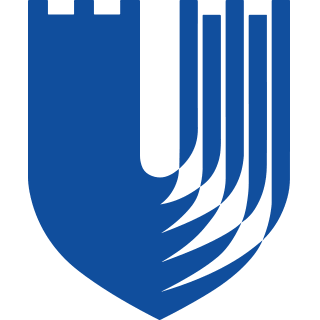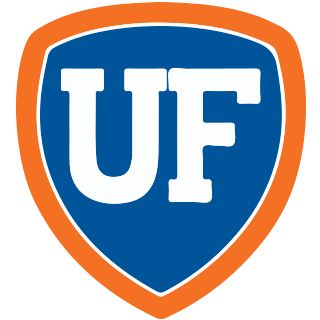Professor, Neurology, Physiology, Pharmacology, Kansas Univ. Med. Center; CEO, pHLOGISTIX LLC
Neurology
Dr. Barry W. Festoff, MD
Dr. Barry W. Festoff works in the field of Neurology. He went to medical school at University of Miami Miller School of Medicine. University of Miami Miller School of Medicine is ranked 45 in research and 0 in primary care medicine He received awards:"Visiting Professor", "Visiting Neuroscientist", "Scientific Advisory Committee", "Elected to ASIA", "Chair", "Colloquium Chair on PARs in the Nervous System", "Session Chair and Speaker", "Invited Speaker", "Faculty Research Investigator Award", "Organizer and invited speaker", "Inducted", "VA National Research Middleton Award", "Poste Verte Visiting Scientist, Laboratoire de Plasticit Crbrale,", "Session chair", "Professeur et Chaire de l'Acadmie des Sciences Franaise", "Behavioral and Neuroscience Special Emphasis Panel, NLS3-1 Study Section, NIH, DRG, Bethesda, MD; Short Term Fellow, Somatic Cell and Molecular Genetics Course, Eleanor Roosevelt", "Member", "Invited Speaker, International Symposium on Space Biology and Medicine", "Organizer and Director, Advanced Research Workshop "Regulation of Extravascular Fibrinolytic Enzymes and Their Inhibitors, the Serpins, in the Nervous System"", "Named as Long Term representative", "Scientific Advisory Board", "National Advisory Board ALS/Neuromuscular Disease Research Foundation", "Biographical listing", "Career Development Awardee, Medical Investigatorship Award", "Visiting Scientist (Maitre de Recherche, 1 Classe)", "Elected, Member of The Corporation", "Elected Member", "American Academy of Neurology", "Elected Fellow", "Elected to American Neurological Association", "Elected to American Society of Biological Chemists", "Organizing Committee", "Examiner", "Chairman", "Mary Jennifer Selznick Fellow", "Principal Proponent", "A.F.Bennett Basic Research Award", "National Multiple Sclerosis postdoctoral Fellowship, Molecular Neurobiology Lab", "NIH postdoctoral Fellowship, Research Training Program in Molecular Biology", "Dr. Joseph", "Roche Medical Student Award", "Medical School Research Award, 2nd Prize", "Elected" and "Freshman Anatomy Award". Barry Festoff is also a published doctor. He has 101 publication published. The most recent publication is: Serpin=serine protease-like complexes within neurofilament conglomerates of motoneurons in amyotrophic lateral sclerosis.
Publications
- Mitochondrial Lysates Induce Inflammation and Alzheimer's Disease-Relevant Changes in Microglial and Neuronal Cells.
- Designing drugs that encourage spinal cord injury healing.
- Soluble thrombomodulin levels in plasma of multiple sclerosis patients and their implication.
- Neuroprotective effects of caspase-3 inhibition on functional recovery and tissue sparing after acute spinal cord injury.
- GRK5 deficiency leads to early Alzheimer-like pathology and working memory impairment.
- Longitudinal magnetic resonance imaging of spinal cord injury in mouse: changes in signal patterns associated with the Inflammatory response.
- Magnetic resonance imaging of mouse spinal cord.
- Neuroprotective effects of recombinant thrombomodulin in controlled contusion spinal cord injury implicates thrombin signaling.
- Abnormality of G-protein-coupled receptor kinases at prodromal and early stages of Alzheimer's disease: an association with early beta-amyloid accumulation.
- Rapid tau aggregation and delayed hippocampal neuronal death induced by persistent thrombin signaling.
- Persistent protease-activated receptor 4 signaling mediates thrombin-induced microglial activation.
- Incorporation of [14C]glucosamine into synaptosomes in vitro.
- Biochemical approaches to the study of synaptic function.
- Insulin resistance in amyotrophic lateral sclerosis.
- Appearance of acetylcholinesterase molecular forms in noninnervated cultured primary chick muscle cells.
- The identification of neurotrophic factor as a transferrin.
- Peripheral nerve extract promotes long-term survival and neurite outgrowth in cultured spinal cord neurons.
- Extracellular matrix synthesis by skeletal muscle in culture. Proteins and effect of enzyme degradation.
- Plasminogen activator: the major secreted neutral protease of cultured skeletal muscle cells.
- Dose-dependent initiation of myogenesis by neurotrophic factor.
- Plasma and red blood cell acetylcholinesterase in amyotrophic lateral sclerosis.
- Proteolytic action of thrombin is required for electrical activity-dependent synapse reduction.
- Insulin-like growth factor binding protein-1 at mouse neuromuscular synapses.
- Insulin-like growth factor binding protein-1 is pre-synaptic at mouse neuromuscular synapses and is transported in nerve.
- Alterations in serum thrombospondin in patients with amyotrophic lateral sclerosis.
- Serine proteinase inhibitors in human skeletal muscle: expression of beta-amyloid protein precursor and alpha 1-antichymotrypsin in vivo and during myogenesis in vitro.
- The insulin-like growth factor signaling system and ALS neurotrophic factor treatment strategies.
- Beneficial effects of insulin-like growth factor-I on wobbler mouse motoneuron Disease.
- Synaptic transmission blockade increases plasminogen activator activity in mouse skeletal muscle poisoned with botulinum toxin type A.
- The gene for the serpin thrombin inhibitor (PI7), protease nexin I, is located on human chromosome 2q33-q35 and on syntenic regions in the mouse and sheep genomes.
- [Serine proteases and their inhibitors: their role in the differentiation in neuromuscular system].
- A serine protease inhibitor, protease nexin I, rescues motoneurons from naturally occurring and axotomy-induced cell death.
- Serine proteases and their serpin inhibitors in Alzheimer''s Disease.
- Extravascular proteolysis and the nervous system: serine protease/serpin balance.
- Cross-linking of beta-amyloid protein precursor catalyzed by tissue transglutaminase.
- Neurotrophic regulation of mouse muscle beta-amyloid protein precursor and alpha 1-antichymotrypsin as revealed by axotomy.
- Apolipoprotein E expression at neuromuscular junctions in mouse, rat and human skeletal muscle.
- Activation of serpins and their cognate proteases in muscle after crush injury.
- Thrombin receptor peptides induce shape change in neonatal murine astrocytes in culture.
- Increased levels of plasminogen activator inhibitor-1 (PAI-1) in human brain tumors.
- A receptor for cathepsin G:alpha 1-antichymotrypsin complexes on mouse spinal cord astrocytes.
- The influence of denervation on beta-amyloid protein precursor and alpha 1-antichymotrypsin in mouse skeletal muscle.
- Proteolytic activity, synapse elimination, and the Hebb synapse.
- Plasminogen activator inhibitor 1, the primary regulator of fibrinolysis, in normal human cerebrospinal fluid.
- Recombinant growth hormone treatment of amyotrophic lateral sclerosis.
- Myoblast fusion promotes the appearance of active protease nexin I on human muscle cell surfaces.
- Prevention of activity-dependent neuronal death: vasoactive intestinal polypeptide stimulates astrocytes to secrete the thrombin-inhibiting neurotrophic serpin, protea...
- Amyotrophic lateral sclerosis: current and future treatment strategies.
- Thrombin, its receptor and protease nexin I, its potent serpin, in the nervous system.
- Recombinant human insulin-like growth factor-I in ALS: description of a double-blind, placebo-controlled study. North American ALS/IGF-I Study Group.
- Neural thrombin and protease nexin I kinetics after murine peripheral nerve injury.
- A molecular mechanism for synapse elimination: novel inhibition of locally generated thrombin delays synapse loss in neonatal mouse muscle.
- Protease nexin I (PNI) in mouse brain is expressed from the same gene as in seminal vesicle.
- Novel expression and localization of active thrombomodulin on the surface of mouse brain astrocytes.
- Identity of neurotrophic molecules released from astroglia by vasoactive intestinal peptide.
- Apoptotic, injury-induced cell death in cultured mouse murine motor neurons.
- Quantitative PCR analysis reveals novel expression of prothrombin mRNA and regulation of its levels in developing mouse muscle.
- Effect of recombinant human insulin-like growth factor-I on progression of ALS. A placebo-controlled study. The North America ALS/IGF-I Study Group.
- Thrombin and its precursor in human cerebrospinal fluid.
- Characterization of apoptosis in a motor neuron cell line.
- Calcium mobilization and protease-activated receptor cleavage after thrombin stimulation in motor neurons.
- Thrombin is an extracellular signal that activates intracellular death protease pathways inducing apoptosis in model motor neurons.
- Apoptosis in cellular compartments of rat spinal cord after severe contusion injury.
- Quantitative reverse transcriptase PCR to gauge increased protease-activated receptor 1 (PAR-1) mRNA copy numbers in the Wobbler mutant mouse.
- Developmental regulation of the serpin, protease nexin I, localization during activity-dependent polyneuronal synapse elimination in mouse skeletal muscle.
- Thrombin perturbs neurite outgrowth and induces apoptotic cell death in enriched chick spinal motoneuron cultures through caspase activation.
- Thrombin-induced reversal of astrocyte stellation is mediated by activation of protein kinase C beta-1.
- Serpin=serine protease-like complexes within neurofilament conglomerates of motoneurons in amyotrophic lateral sclerosis.
- Insulin-like growth factor binding proteins in cerebrospinal fluid during human development and aging.
- Bioenergetic Dysfunction and Inflammation in Alzheimer's Disease: A Possible Connection.
- Regulation of the dual function tissue transglutaminase/Galpha(h) during murine neuromuscular development: gene and enzyme isoform expression.
- Developmental regulation of amyloid precursor protein at the neuromuscular junction in mouse skeletal muscle.
- Selective developmental regulation of gene expression for insulin-like growth factor-binding proteins in mouse spinal cord.
- Motor neuron cell death in wobbler mutant mice follows overexpression of the G-protein-coupled, protease-activated receptor for thrombin.
- Intron-exon swapping of transglutaminase mRNA and neuronal Tau aggregation in Alzheimer's Disease.
- Rapid upregulation of caspase-3 in rat spinal cord after injury: mRNA, protein, and cellular localization correlates with apoptotic cell death.
- Upregulation of neuroToxic serine proteases, prothrombin, and protease-activated receptor 1 early after spinal cord injury.
- Neuroprotective signal transduction in model motor neurons exposed to thrombin: G-protein modulation effects on neurite outgrowth, Ca(2+) mobilization, and apoptosis.
- Plasticity and stabilization of neuromuscular and CNS synapses: interactions between thrombin protease signaling pathways and tissue transglutaminase.
- Protein crosslinking, tissue transglutaminase, alternative splicing and neurodegeneration.
- Participation of protease-activated receptor-1 in thrombin-induced microglial activation.
- Injury-induced "switch" from GTP-regulated to novel GTP-independent isoform of tissue transglutaminase in the rat spinal cord.
- Treatment of ventricular arrhythmia by permanent atrial pacemaker and cardiac sympathectomy.
- Regulation of mitotic activity and the cell cycle in primary chick muscle cells by neurotransferrin.
- Daily fluctuation in the concentration of cAMP in the conscious primate brain.
- The circadian pattern of catcholamine metabolites and cAMP in the cerebrospinal fluid of subhuman primates.
- Prospects for the pharmacotherapy of amyotrophic lateral sclerosis : old strategies and new paradigms for the third millennium.
- beta-Synuclein reduces proteasomal inhibition by alpha-synuclein but not gamma-synuclein.
- Tissue transglutaminase during mouse central nervous system development: lack of alternative RNA processing and implications for its role(s) in murine models of neurot...
- Minocycline neuroprotects, reduces microgliosis, and inhibits caspase protease expression early after spinal cord injury.
- Thrombin: a potential proInflammatory mediator in neurotrauma and neurodegenerative disorders.
- Gender-related differences in recovery of locomotor function after spinal cord injury in mice.
- The preclinical rationale for the use of insulin-like growth factor-I in amyotrophic lateral sclerosis.
- In vitro studies of skeletal muscle membranes. Effects of denervation on the macromolecular components of cation transport in red and white skeletal muscle.
- Mechanism of action of neurotoxins.
- Neurotrophic control of cyclic nucleotide levels during muscle differentiation in cell culture.
- Bidirectional axonal transport of 16S acetylcholinesterase in rat sciatic nerve.
- Release of acetylcholinesterase in amyotrophic lateral sclerosis.
- Occurrence of reduced alpha 2-macroglobulin and lowered protease inhibiting capacity in plasma of amyotrophic lateral sclerosis patients.
- Acetylcholine receptor turnover in clonal muscle cells: role of plasmin and effects of protease inhibitors.
Schools
University of Miami School of Medicine
Duke University Med Center
National Institute Of Health
University Miami Jackson Meml Hospital
Conditions Treated
- Diabetic Polyneuropathy
- Dystonia
- Gait Abnormality
- Inflammatory and Toxic Neuropathy
- View All
Doctors Specialties
- Neurology
Accepted Insurances
Awards
- Visiting Professor
- Visiting Neuroscientist
- Scientific Advisory Committee
- Elected to ASIA
- Chair
- Colloquium Chair on PARs in the Nervous System
- Session Chair and Speaker
- Invited Speaker
- Faculty Research Investigator Award
- Organizer and invited speaker
- Inducted
- VA National Research Middleton Award
- Poste Verte Visiting Scientist, Laboratoire de Plasticité Cérébrale,
- Session chair
- Professeur et Chaire de l'Académie des Sciences Française
- Behavioral and Neuroscience Special Emphasis Panel, NLS3-1 Study Section, NIH, DRG, Bethesda, MD; Short Term Fellow, Somatic Cell and Molecular Genetics Course, Eleanor Roosevelt
- Member
- Invited Speaker, International Symposium on Space Biology and Medicine
- Organizer and Director, Advanced Research Workshop "Regulation of Extravascular Fibrinolytic Enzymes and Their Inhibitors, the Serpins, in the Nervous System"
- Named as Long Term representative
- Scientific Advisory Board
- National Advisory Board ALS/Neuromuscular Disease Research Foundation
- Biographical listing
- Career Development Awardee, Medical Investigatorship Award
- Visiting Scientist (Maitre de Recherche, 1 Classe)
- Elected, Member of The Corporation
- Elected Member
- American Academy of Neurology
- Elected Fellow
- Elected to American Neurological Association
- Elected to American Society of Biological Chemists
- Organizing Committee
- Examiner
- Chairman
- Mary Jennifer Selznick Fellow
- Principal Proponent
- A.F.Bennett Basic Research Award
- National Multiple Sclerosis postdoctoral Fellowship, Molecular Neurobiology Lab
- NIH postdoctoral Fellowship, Research Training Program in Molecular Biology
- Dr. Joseph
- Roche Medical Student Award
- Medical School Research Award, 2nd Prize
- Elected
- Freshman Anatomy Award
Education
-
 Jackson Memorial Hospital - Jackson Health System
Jackson Memorial Hospital - Jackson Health System -
 Duke University Hospital
Duke University Hospital -
 University of Miami Miller School of Medicine
University of Miami Miller School of Medicine -
 University of Florida
University of Florida
Hospital
-
 The University of Kansas Hospital
The University of Kansas Hospital
Helpful Reviews
Similar Doctors

|
Dr. Charles D. Donohoe, MD
 This Doctor is OpenDoctor Recommended. This Doctor is OpenDoctor Recommended.
|

|
Dr. Jerome V. Murphy, MD
 This Doctor is OpenDoctor Recommended. This Doctor is OpenDoctor Recommended.
|

|
Dr. John J. Sand, MD
 This Doctor is OpenDoctor Recommended. This Doctor is OpenDoctor Recommended.
|

|
Dr. Feitau Kung, MD
 This Doctor is OpenDoctor Recommended. This Doctor is OpenDoctor Recommended.
|

|
Dr. Vernita Hairston-Mitchell, MD
 This Doctor is OpenDoctor Recommended. This Doctor is OpenDoctor Recommended.
|

|
Dr. Albert B. Horn III, MD |

|
Dr. Scott M. Belliston, DO |

|
Dr. Maria M. Legarda, MD |

|
Dr. Anastasia Luniova, MD |

|
Dr. Jeanne E. Reiss, MD
 This Doctor is OpenDoctor Recommended. This Doctor is OpenDoctor Recommended.
|